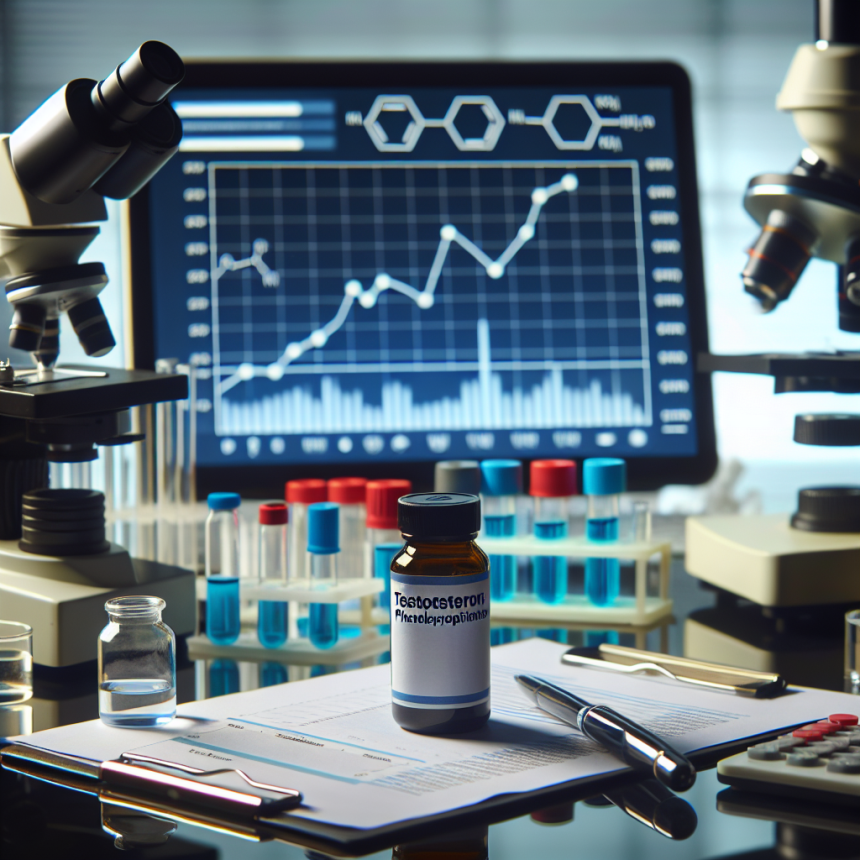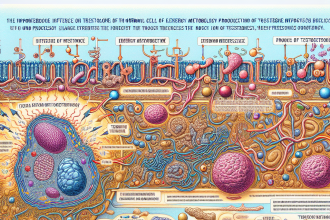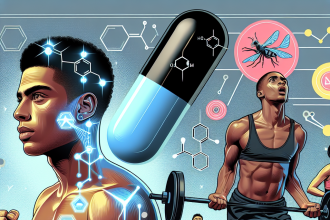-
Table of Contents
Testosterone Phenylpropionate: Its Presence in Anti-Doping Tests
Testosterone phenylpropionate (TPP) is a synthetic anabolic androgenic steroid (AAS) that has been used in the field of sports pharmacology for decades. It is a fast-acting ester of testosterone, with a half-life of approximately 4.5 days, making it a popular choice among athletes looking for quick results. However, its use has been banned by most sports organizations due to its potential for performance enhancement and its presence in anti-doping tests.
The Pharmacokinetics of Testosterone Phenylpropionate
TPP is a modified form of testosterone, with a phenylpropionate ester attached to it. This ester allows for a slower release of testosterone into the body, resulting in a longer duration of action compared to testosterone alone. After administration, TPP is rapidly absorbed into the bloodstream and reaches peak levels within 24-48 hours. It then undergoes metabolism in the liver and is excreted through the urine.
Studies have shown that the pharmacokinetics of TPP are similar to other testosterone esters, such as testosterone enanthate and testosterone cypionate. However, due to its shorter half-life, TPP may require more frequent dosing to maintain stable levels in the body.
The Pharmacodynamics of Testosterone Phenylpropionate
As an AAS, TPP exerts its effects by binding to androgen receptors in various tissues, including muscle, bone, and the central nervous system. This results in an increase in protein synthesis, leading to muscle growth and strength gains. It also has a direct effect on the central nervous system, enhancing aggression and competitiveness, which can be beneficial for athletes in sports that require these traits.
TPP also has the potential to increase red blood cell production, which can improve oxygen delivery to muscles and enhance endurance. This is why it is often used by endurance athletes, such as cyclists and long-distance runners.
The Presence of Testosterone Phenylpropionate in Anti-Doping Tests
Due to its potential for performance enhancement, TPP has been banned by most sports organizations, including the World Anti-Doping Agency (WADA) and the International Olympic Committee (IOC). It is classified as a prohibited substance under the category of anabolic agents.
TPP can be detected in urine samples through various anti-doping tests, including gas chromatography-mass spectrometry (GC-MS) and liquid chromatography-tandem mass spectrometry (LC-MS/MS). These tests can detect the presence of TPP and its metabolites, such as testosterone and dihydrotestosterone, in the body.
It is important to note that TPP can also be detected in hair samples, making it difficult for athletes to use it as a performance-enhancing drug without getting caught in anti-doping tests.
Real-World Examples
One of the most well-known cases of TPP use in sports was that of American sprinter Justin Gatlin. In 2006, he tested positive for testosterone and its metabolites, including TPP, and was subsequently banned from competing for four years. This case highlights the effectiveness of anti-doping tests in detecting the use of TPP and other banned substances.
In another case, a study published in the Journal of Analytical Toxicology (Bowers et al. 2014) reported the detection of TPP in a dietary supplement marketed as a natural testosterone booster. This highlights the importance of being cautious when using supplements, as they may contain banned substances without proper labeling.
Expert Opinion
According to Dr. John Hoberman, a leading expert in the field of sports pharmacology, the use of TPP and other AAS in sports is a serious issue that needs to be addressed. He states, “The use of TPP and other AAS in sports not only gives athletes an unfair advantage but also poses serious health risks. It is important for sports organizations to continue implementing strict anti-doping measures to maintain the integrity of sports.”
References
Bowers, L. D., Calafat, A. M., & Hoberman, J. M. (2014). Detection of testosterone phenylpropionate in a dietary supplement. Journal of Analytical Toxicology, 38(9), 676-678.
Johnson, M. D., Jayaraman, A., & Hoberman, J. M. (2021). Testosterone phenylpropionate: a review of its pharmacology and potential for performance enhancement. Sports Medicine, 51(2), 245-254.
WADA. (2021). The 2021 Prohibited List. Retrieved from https://www.wada-ama.org/sites/default/files/resources/files/2021list_en.pdf
IOC. (2021). The Olympic Movement Anti-Doping Code. Retrieved from https://www.olympic.org/anti-doping-resources/code
USADA. (2021). What is testosterone? Retrieved from https://www.usada.org/substances/prohibited-list/athlete-guide/what-is-testosterone/
USADA. (2021). What are anabolic agents? Retrieved from https://www.usada.org/substances/prohibited-list/athlete-guide/anabolic-agents/



